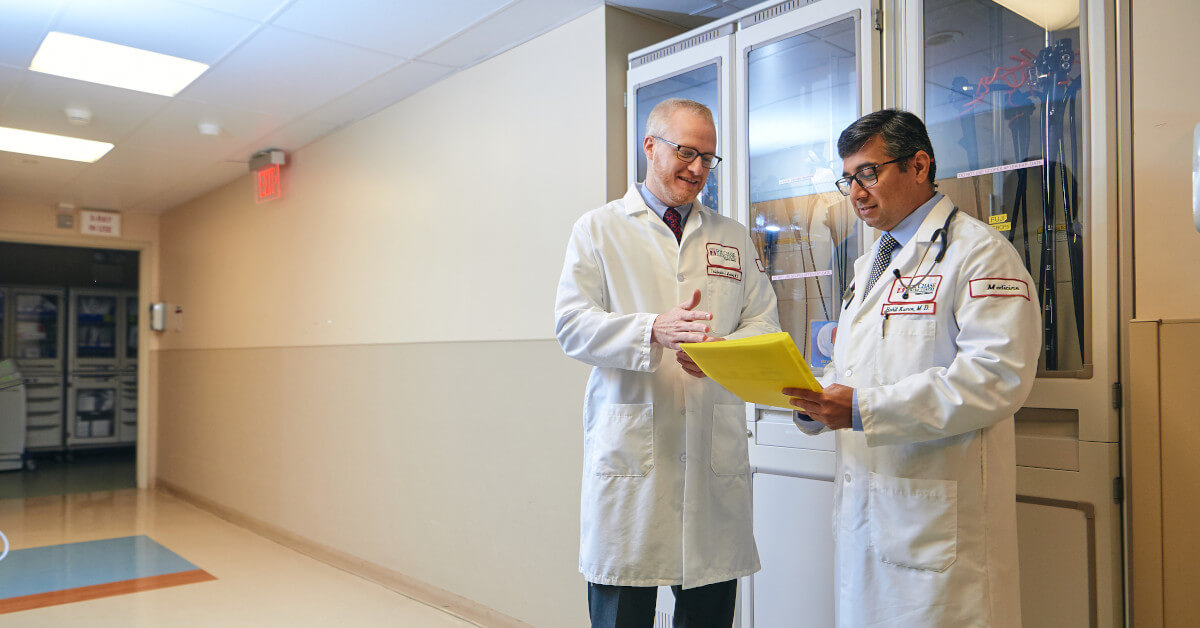
PHILADELPHIA (July 8, 2021) — Mechanical removal is safer than more traditional methods of burning or ablating tumors that arise from recurrent respiratory papillomatosis (RRP), a respiratory disease caused by the human papilloma virus, according to the findings of a case series published recently by researchers at Fox Chase Cancer Center.
In addition to reviewing the techniques currently used to treat the disease, the researchers concluded that patients have the best chance of successfully managing their disease if they are treated at a comprehensive cancer center.
“A lot of people wouldn’t think to refer to a cancer center for treating these lesions,” said Christopher J. Manley, MD, director of Interventional Pulmonology at Fox Chase. That’s because the papillomas that develop in patients’ airways do not typically present as cancerous.
“But our expertise is in dealing with all tumors in the airways, both benign and malignant. So while these papillomas are considered benign in most cases, it’s important that they’re treated in a center with special training and expertise in management of airway tumors.”
RRP causes two primary issues for patients. One occurs when the papillomas, which are essentially benign tumors, obstruct the patient’s airway by growing, for example, in the windpipe.
Manley, Rohit Kumar, MD, director of the Respiratory and Pulmonary Function Service at Fox Chase, and their coauthors reviewed the techniques clinicians use to remove these tumors. They concluded that mechanical removal is safer because burning or ablating the tumor releases the virus into the air, potentially enabling it to travel further down the patient’s airway into their lungs.
“Although you’re relieving what’s going on in their windpipe, you’re making a problem down the road,” said Kumar. “And because it’s a slow process you never realize it. You could do this today and it could emerge in the lung a year or two from now.”
Kumar and Manley recommend the use of a surgical tool called a microdebrider. This tool—a rigid catheter with a spinning blade and suction at one end—has been used in orthopedic and ear, nose, and throat surgery for decades.
Pulmonologists have more recently adapted it for use with RRP patients, not only because it works to remove tumors without releasing the virus into the lungs, but because it can be used in high-oxygen environments, where any sort of spark or heat that could occur with surgical instruments like lasers or argon plasma could cause fire in the patient’s airway.
The other issue patients with RRP face is the fact that these tumors have the potential to become cancerous. Therefore, receiving regular follow-up from medical professionals with the appropriate expertise is critical.
“Patients can present with papillomas in a variety of ways, and the treatment can vary drastically based on their needs,” said Manley. “So early referral to a comprehensive cancer center or place with expertise in dealing with these papillomas is important.”
The paper, “Treatment of Recurrent Respiratory Papillomatosis: Case Series and Review of Technique,” was published in Surgical Technology International.